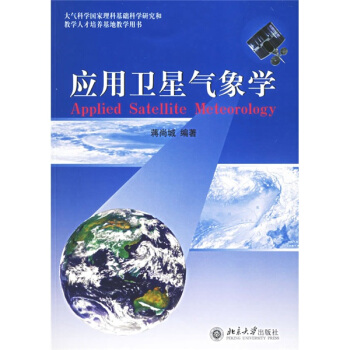![基本粒子及其相互作用:概念和唯象論 [Elementary Particles and Their Interactions:Concepts and Phenomena]](https://pic.qciss.net/10104484/02c1d007-a192-41c7-a634-326071e874c3.jpg)

具體描述
內容簡介
The last few decades have seen major advances in the physics of elementary particles. New generations of particle accelerators and detectors have come into operation, and have successfully contributed to improving the quantity and quality of data on diverse interaction processes and to the discoveries of whole new families of particles. At the same time, important new ideas have emerged in quantum field theory, culminating in the developments of theories for the weak and strong interactions to complement quantum electrodynam-ics, the theory of the electromagnetic force. The simplest of the new theories that are at the same time mathematically consistent and physically successful constitute what is known as the standard model of the fundamental interac-tions. This book is an attempt to present these remarkable advances at an elementary level, making them accessible to students familiar with quantum mechanics, special relativity, and classical electrodynamics.內頁插圖
目錄
1 Particles and Interactions:An Overview1.1 A Preview
1.2 Particles
1.2.1 Leptons
1.2.2 Quarks
1.2.3 Hadrons
1.3 Interactions
1.4 Symmetries
1.5 Physical Units
Problems
Suggestions for Further Reading
2 B080n Fields
2.1 Lorentz Symmetry
2.1.1 Lorentz TraIlsformations
2.1.2 Tensor Algebra
2.1.3 llensor Fields
2.2 Scalar Fields
2.2.1 Space-Time Translation of a Scalar Field
2.2.2 Lorentz Transformation of a Scalar Field
2.3 Vector Fields
2.4 The Klein-Gordon Equation
2.4.1 Free-Patticle Solutions
2.4.2 Particle Probability
2.4.3 Second Quantization
2.4.4 Operator Algebra
2.4.5 Physical Significance of the Fock Operators
2.5 Quantized Vector Fields
2.5.1 Maesive Vector Fields
2.5.2 The Maxwell Equations
2.5.3 Quantization of the Electromagnetic Field
2.5.4 Field Energy and Momentum
2.6 The Action
2.6.1 The Euler-Lagrange Equation
2.6.2 Conserved Current
Problems
Suggestions for Further Reading
3 Fermion Fields
3.1 The Dirac Equation
3.2 Lorentz Symmetry
3.2.1 Covariance of the Dirac Equation
3.2.2 Spin of the Dirac Field
3.2.3 Bilinear Covariants
3.3 Free.Particle Solutions
3.3.1 Normalized Spinors
3.3.2 Completeness Relations
3.3.3 Helicities
3.4 The Lagrangian for a Free Dirac Particle
3.5 Quantization of the Dirac Field
3.5.1 Spins and Statistics
3.5.2 Dirac Field Observables
3.5.3 F0ck Space
3.6 Zero-Mass Fermions
Problems
Suggestions for Further Reading
4 Collisions and Decays
4.1 Interaction Representation
4.1.1 The Three Pictures
4.1.2 Time E:volution in the Interaction Picture
4.1.3 The S.matrix
4.2 Cross.Sections and Decay Rares
4.2.1 General Formulas
4.2.2 Two-Body Reaction to Two-Body Final States
4.2.3 Decay Rates
4.3 Interaction Models
4.4 Decay Modes of Scalar Particles
4.4.1 Neutral Decay Mode
4.4.2 Charged Decay Mode
4.5 Pion Scattering
4.5.1 The Scalar Boson Propagator
4.5.2 Scattering Processes
4.5.3 Summary and Generalization
4.6 Electron-Proton Scattering
4.6.1 The Electromagnetic Interaction
4.6.2 Electron-Proton Scattering Cross-Section
4.7 Electron-Positron Annihilation
4.8 Compton Scattering
Problems
Suggestions for Further Reading
5 Discrete Symmetries
5.1 Parity
5.1.1 Parity in Quantum Mechanics
5.1.2 Parity in Field Theories
5.1.3 Parity and Interactions
5.2 Time Inversion
5.2.1 Time Inversion in Quantum Mechanics
5.2.2 Time Inversion in Field Theories
5.2.3丁and Interactions
5.3 Charge Conjugation
5.3.1 Additive Quantum Numbers
5.3.2 Charge Conjugation in Field Theories
5.3.3 Interactions
5.4 The CPT Theorem
5.4.1 Implications of CPT Invariance
5.4.2 C.P,T.and CPT
Problems
Suggestions for Further Reading
6 Hadtons and Isospln
6.1 Charge Symmetry and Charge Independence
6.2 Nucleon Field in Isospin Space
6.3 Pion Field in Isospin Space
6.4 G.Parity
6.4.1 Nucleon and Pion Fields
6.4.2 Other Unflavored Hadrons
6.5 Isospin of Strange Particles
6.6 Isospin Violations
6.6.1 Electromagnetic Interactions
6.6.2 Wlealc Interactions
Problems
Suggestions for Further Reading
7 Quarks and SU(3)Symmetry
7.1 Isospin:SU(2) Symmetry
7.2 Hypercharge:SU(31 Symmetry
7.2.1 The Fundamental Representation
7.2.2 Higher.Dimensional Representations
7.2.3 Physical Significance of F3 and F3
7.2.4 3×3*Equal Mesons
7.2.5 3×3×3 Equal Baryons
7.3 Mass Splitting of the Hadron Multiplets
7.3.1 Baryons
7.3.2 Mesons
7.4 Including Spin:SU(6)
7.4.1 Mesons
7.4.2 Baryons
7.4.3 Application:Magnetic Moments of Hadrons
7.5 The Color of Quarks
7.6 The New Particles
7.6.1 J/tf,and Charm
7.6.2 The TaU Lepton
7.6.3 From Bottom to ToP
Problems
Suggestions for Further Reading
8 Gauge Field Theories
8.1 Symmetries and Interactions
8.2 Abelian Gauge Invariance
8.3 Non.Abelian Gauge Invariance
8.4 Quantum Chromodynamics
8.5 Spontaneous Breaking of Global Symmetries
8.5.1 The Basic Idea
8.5.2 Breakdown ofDiscrete Symmetry
8.5.3 Breakdown of Abelian Symmetry
8.5.4 Breakdown of Non-Abelian Symmetry
8.6 Spontaneous Breaking ofLocal Symmetries
8.6.1 Abelian Symmetry
8.6.2 Non.Abelian Symmetry
Problems
Suggestions for Further Reading
9 The Standard Model of the Electroweak Interaction
9.1 The Wleak Interaction Before the Gauge Theories
9.2 Gauge.Invariant Model of One.Lepton Family
9.2.1 Global Symmetry
9.2.2 Gauge Invariance
……
精彩書摘
1.4 SymmetriesThe recent history of physics gives us several examples that illustrate theimportance of the symmetry considerations in explaining empirical observa.tions or in developing new ideas .Thus,the intriguing regularities found in the atomic periodic table can be naturally explained as resulting from the rotational symmetry that characterizes atoms in their ground states;similarly,the relativity theory owes the clarity and the elegance of its fornmlation toits guiding principle,Lorentz in variance .However,more than any other field,particle physics,perhaps because of the very nature of the subject or becauseof the absence of relevant macroscopic analogies or useful classical correspon.dences,has by necessity conferred upon the symmetry concept a key role that has become essential in fornmlating new theories.The existence of the Q-particle and the reality of quarks are two outstanding demonstrations of thepower of this line of reasoning.but no less impressive is the prediction of theexistence of the electronic neutrino by Wolfgang Pauli back in 1 930 solely onthe basis of the conservation of energy, momentum,and angular nlomentum,the validity of which was still in doubt at the time.Pauli took a road less traveled by and opened up a whole new world. The prominent place taken by the symmetry considerations throughout this book only reflects their importance in particle physics.In this section .we will sketch a general picture of the idea. and briefly define various symmetry operations. As we have seen above .every particle js identified by a set of quantumnumbers.These numbers summarize the intrinsic properties of the particleand,for this reason,are called the internal quantum numbers,meaning thatthey have nothing to do with the kinetic state of the particle.which is de.scribed by other conserved quantities that depend on the state the particleis in,such as the energy,momentum,or angular momentum. The existence of a quantum number in a system always arises from theinvariance of the system under a qlobal geometrical transformation.that is。one that does not depend on the coordinates of the space.time point whereit is applied.A simple example suffices to illustrate the general situation.Consider two particles in a refefence frame iu which their interaction energydepends only on the relative distance of the particles.It follows then,first,that a displacement of the origin of the coordinates by an arbitrary distanceproduces no measurable physical effects on the system,and second,that thetotal momentum of the system remains constant in time because its rate ofchange,given by the total gradient of the interaction energy,is strictly zero.So,generally.if we have a physicaI system in which the absolute positions arenot observable fits energy depending off the relative distance rather than in.dividual particle positionsl and if we apply on it a geometrical transformation(spatial translation),then we obtain as direct consequences the invariance ofthe systern to the applied transformation(translational invariance)and theexistence of用戶評價
很滿意!!很滿意!!很滿意!!很滿意!!
評分讀書可以使自己的知識得到積纍,君子學以聚之。總之,愛好讀書是好事。讓我們都來讀書吧。在書的海洋裏遨遊也是一種無限快樂的事情。讀書養性,讀書可以陶冶自己的性情,使自己溫文爾雅,具有書捲氣;從書中,你往往可以發現自己身上的不足之處,使你不斷地改正錯誤,擺正自己前進的方嚮。書也是我們的良師益友。 多讀書,可以讓你變聰明,變得有智慧去戰勝對手。書讓你變得更聰明,你就可以勇敢地麵對睏難。讓你用自己的方法來解決這個問題。這樣,你又嚮你自己的人生道路上邁齣瞭一步。 多讀書,也能使你的心情便得快樂。讀書也是一種休閑,一種娛樂的方式。 其實讀書有很多好處,就等有心人去慢慢發現.最大的好處是可以讓你有屬於自己的本領靠自己生存。多讀書,可以讓你多增加一些課外知識。培根先生說過:“知識就是力量。這種力量可以激勵著你不斷地前進,不斷地成長。讀書可以調節身體的血管流動,使你身心健康。[QY]所以用讀書來為自己放鬆心情也是一種十分明智的。 讀書能陶冶人的情操,給人知識和智慧。所以,我們應該多讀書,為我們以後的人生道路打下好的、紮實的基礎!讀書破萬捲,下筆如有神,多讀書可以提高寫作能力,寫文章就纔思敏捷”不錯,多讀書,增長瞭課外知識,可以讓你感到渾身充滿瞭一股力量。舊書不厭百迴讀,熟讀深思子自知,讀書可以提高理解能力,隻要熟讀深思,你就可以知道其中的道理瞭;
評分關於高能物理唯象學的比較詳盡的介紹
評分讀書可以使自己的知識得到積纍,君子學以聚之。總之,愛好讀書是好事。讓我們都來讀書吧。在書的海洋裏遨遊也是一種無限快樂的事情。讀書養性,讀書可以陶冶自己的性情,使自己溫文爾雅,具有書捲氣;從書中,你往往可以發現自己身上的不足之處,使你不斷地改正錯誤,擺正自己前進的方嚮。書也是我們的良師益友。 多讀書,可以讓你變聰明,變得有智慧去戰勝對手。書讓你變得更聰明,你就可以勇敢地麵對睏難。讓你用自己的方法來解決這個問題。這樣,你又嚮你自己的人生道路上邁齣瞭一步。 多讀書,也能使你的心情便得快樂。讀書也是一種休閑,一種娛樂的方式。 其實讀書有很多好處,就等有心人去慢慢發現.最大的好處是可以讓你有屬於自己的本領靠自己生存。多讀書,可以讓你多增加一些課外知識。培根先生說過:“知識就是力量。這種力量可以激勵著你不斷地前進,不斷地成長。讀書可以調節身體的血管流動,使你身心健康。[QY]所以用讀書來為自己放鬆心情也是一種十分明智的。 讀書能陶冶人的情操,給人知識和智慧。所以,我們應該多讀書,為我們以後的人生道路打下好的、紮實的基礎!讀書破萬捲,下筆如有神,多讀書可以提高寫作能力,寫文章就纔思敏捷”不錯,多讀書,增長瞭課外知識,可以讓你感到渾身充滿瞭一股力量。舊書不厭百迴讀,熟讀深思子自知,讀書可以提高理解能力,隻要熟讀深思,你就可以知道其中的道理瞭;
評分讀書可以使自己的知識得到積纍,君子學以聚之。總之,愛好讀書是好事。讓我們都來讀書吧。在書的海洋裏遨遊也是一種無限快樂的事情。讀書養性,讀書可以陶冶自己的性情,使自己溫文爾雅,具有書捲氣;從書中,你往往可以發現自己身上的不足之處,使你不斷地改正錯誤,擺正自己前進的方嚮。書也是我們的良師益友。 多讀書,可以讓你變聰明,變得有智慧去戰勝對手。書讓你變得更聰明,你就可以勇敢地麵對睏難。讓你用自己的方法來解決這個問題。這樣,你又嚮你自己的人生道路上邁齣瞭一步。 多讀書,也能使你的心情便得快樂。讀書也是一種休閑,一種娛樂的方式。 其實讀書有很多好處,就等有心人去慢慢發現.最大的好處是可以讓你有屬於自己的本領靠自己生存。多讀書,可以讓你多增加一些課外知識。培根先生說過:“知識就是力量。這種力量可以激勵著你不斷地前進,不斷地成長。讀書可以調節身體的血管流動,使你身心健康。[QY]所以用讀書來為自己放鬆心情也是一種十分明智的。 讀書能陶冶人的情操,給人知識和智慧。所以,我們應該多讀書,為我們以後的人生道路打下好的、紮實的基礎!讀書破萬捲,下筆如有神,多讀書可以提高寫作能力,寫文章就纔思敏捷”不錯,多讀書,增長瞭課外知識,可以讓你感到渾身充滿瞭一股力量。舊書不厭百迴讀,熟讀深思子自知,讀書可以提高理解能力,隻要熟讀深思,你就可以知道其中的道理瞭;
評分基本粒子及其相互作用 概念和唯象論,內容很基本也很全麵,是一本很好的入門,就是字體小些,也不能算是缺點,紙張利用率高瞭,包含瞭更多內容,661頁,京東價格優惠很大,支持京東。
評分從概念講起,提供粒子物理世界完整的介紹,並有高能唯象理論的闡述。打算先看完其他入門教材再讀這本書。
評分我是學物理專業的,最近想研究一下唯象論,所以選著瞭這本書,還是英文原著的,比較專業的書籍,要花時間去消化瞭。
評分關於高能物理唯象學的比較詳盡的介紹
相關圖書
本站所有內容均為互聯網搜尋引擎提供的公開搜索信息,本站不存儲任何數據與內容,任何內容與數據均與本站無關,如有需要請聯繫相關搜索引擎包括但不限於百度,google,bing,sogou 等
© 2025 book.qciss.net All Rights Reserved. 圖書大百科 版權所有

![世界優秀教材中國版理科類係列教材·統計和數據分析:從基礎到中級(改編版) [STATISTICS DATA ANALYSIS(from Elementary to Intermediate)] pdf epub mobi 电子书 下载](https://pic.qciss.net/10124690/564150ceN2efd2332.jpg)




![復分析(英文影印版) [COMPLEX ANALYSIS] pdf epub mobi 电子书 下载](https://pic.qciss.net/10175905/7673ecbf-71e3-46be-9caf-9ca91682480f.jpg)













